The largest container shipping caller in the world is the Maersk Line, which is separate of the danish conglomerate A.P. Moller – Maersk Group. The 600 vessels of the Maersk Line can carry 3 million twenty-foot container boxes. It transported $ 675 billion worth of goods in 2012. At that volume, here ’ s how a lot it costs to transport versatile goods from Asia to Europe : $ 10 for a flat-screen television ; 11 cents for a pair of sport shoes ; 4 cents for a jersey ; and 5 cents for a tablet. If the containers of Maersk alone were lined up, they would stretch halfway across the satellite. Until recently, Maersk operated the largest container ships in the global, the Triple-E, which are adequate to of holding 18,000 twenty-foot containers. ( It has nowadays been surpassed by ships that can carry 19,000 containers. ) The Triple-E weighs 165,000 tons and has a much sword as eight Eiffel Towers. Maersk is the largest ocean carrier, but not the only one. This musical composition is a brief template to the largest ocean carriers in the world. ( note : All information is current as of December 2015. )
Maersk Line (3 million TEU)
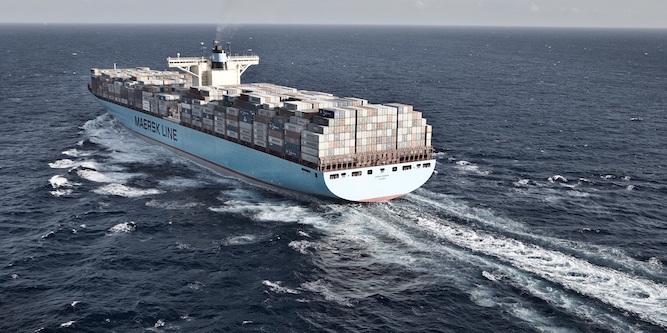
Maersk was founded in 1928 and based in Copenhagen, Denmark. It ’ s such a boastfully party that its revenues are 14 % of Denmark ’ s GDP. It can carry closely 3,000,000 container boxes, measured as twenty-foot equivalent units ( or TEUs ). That gives it approximately 14.7 % of the grocery store contribution in container shipping. Its tax income in 2014 was US $ 48 billion. Maersk has been advanced in multiple ways. Besides leading the way in investment of newly transportation technologies, Maersk has been unprecedentedly guileless. In addition, it ’ s the ocean carrier doing the most to reduce shipping-related befoulment .
Mediterranean Shipping Company (2.6 million TEU)

The Mediterranean Shipping Company ( or MSC ) was founded in 1970 by Gianluigi Aponte, an italian. It ’ second headquartered in Geneva, Switzerland, mighty on the cheery Mediterranean coast. ( Just pull the leg of, Geneva is quite far from the Mediterranean Sea ; MSC ’ s most crucial port at Antwerp, Belgium, is besides far aside. ) MSC can carry 2.6 million TEU, which gives it 13.3 % of the market parcel. It has a fleet of about 480 vessels, and calls at 315 ports around the world .
CMA CGM (1.8 million TEU)
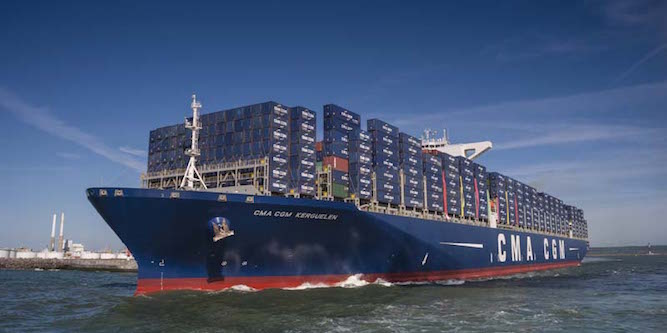
CMA CGM is a Marseille-based company founded in 1978. The initials stand for Compagnie Maritime vitamin d ’ Affrètement Compagnie Générale Maritime. It has a capacity of carrying 1.8 million TEU, which is about 8.8 % of the market. Its flit of 470 vessels earned revenues of around $ 17 billion in 2014. CMA CGM only broke into the crown 10 carriers in 2000. It ’ sulfur been one of the companies most aggressive about expanding grocery store plowshare. In December 2015, CMA CGM purchased the Singapore-based Neptune Orient Lines, which controls 500,000 TEUs through the embark channel APL .
Hapag-Lloyd (940,000 TEU)
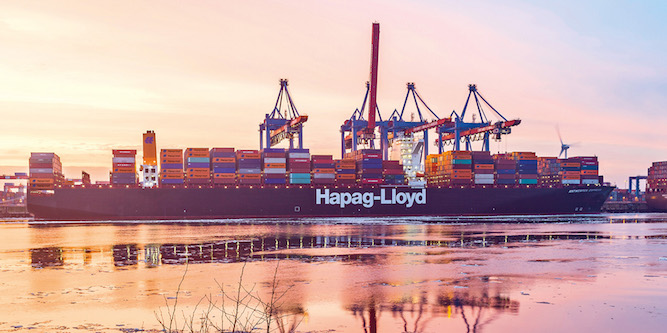
Hapag-Lloyd is a Hamburg-based firm formed from the amalgamation of two nineteenth century companies : The Hamburg-Amerikanische Paketfahrt AG and the Norddeutscher Lloyd. It has a capacity of 940,000 TEUs, which gives it a 4.6 % market parcel. It recently raised $ 300 million in an IPO on the Frankfurt Stock Exchange. Unlike similar-sized competitors, Hapag-Lloyd is not planning on aggressive expansion. Maersk, MSC, CMA CGM, Evergreen, COSCO, and China Shipping are all ordering greater capacitance. By the time all current orders are completed, Hapag-Lloyd is expected to fall to sixth place, between COSCO and China Shipping .
Evergreen Marine (930,000 TEU)
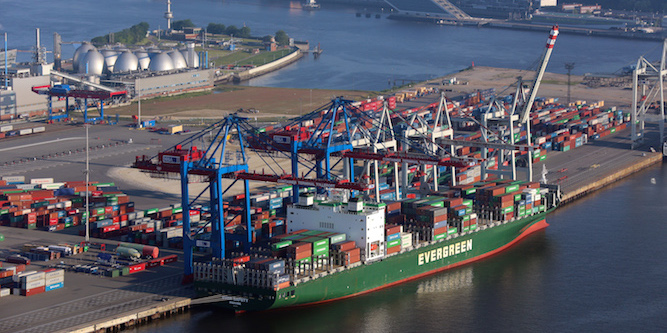
( “ HP L4329 ” by Alchemist-hp. Photo via Wikimedia Commons ) Evergreen is based in Taoyuan, Taiwan. It was founded in 1968 by Dr. Chang Yung-Fa, who planned ambitious round-the-world services heading both east and west. Its ships were then able to circumnavigate the world 81 days going east and 82 days going west. Evergreen has a capacity to handle 930,000 TEUs, and has about the same market plowshare as Hapag-Lloyd ’ south at 4.6 %. Given the scale of its orders, it ’ randomness expected to soon surpass the scale of Hapag-Lloyd.
COSCO (850,000 TEU)
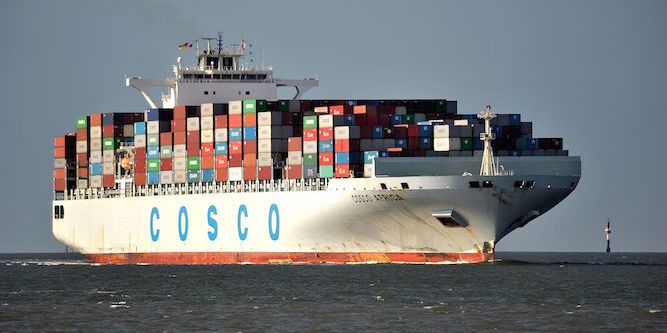
( “ COSCO Africa ” by Bernhard Fuchs. Photo via Wikimedia Commons. ) The China Ocean Shipping Company is based in Beijing. The former five carriers are either privately- and/or family-owned. COSCO is owned by the chinese government. COSCO can handle 850,000 TEUs, and it has a marketplace share of 4.2 %. There has long been lecture of merging COSCO with China Shipping, the other state-run ship firm in China. After consideration by the government, this amalgamation is expect to go through in early-2016. It would form the world ’ s fourth largest carrier line, with a capacitance of over 1.5 million TEUs .
China Shipping (700,000 TEU)
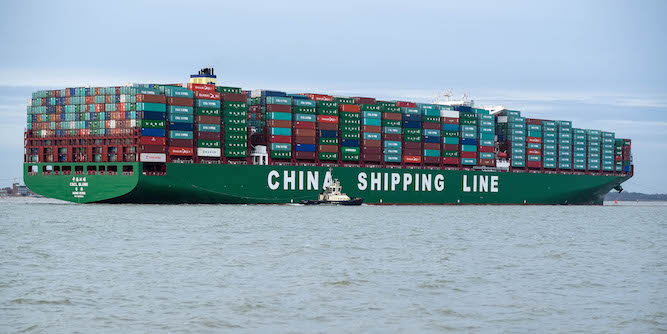
( “ CSCL Globe arriving at Felixstowe, United Kingdom ” by Keith Skipper. Photo via Wikimedia Commons ) China Shipping, besides known as CSCL, is based in Shanghai. It is once again a company owned by the taiwanese politics. China Shipping has a capacitance of 700,000 TEUs, which is about 3.4 % of the marketplace. After its fusion of COSCO ( see above ), the new company would have a market share of about 7.6 % .
Hamburg Süd (650,000 TEU)
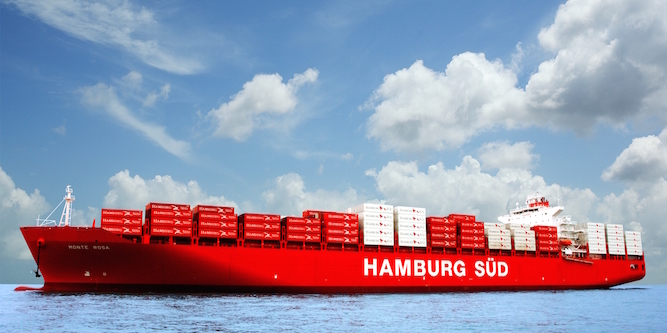
Hamburg Süd was founded in 1871 as the Hamburg Südamerikanische Dampfschifffahrts-Gesellschaft, or the Hamburg South America Steamship Company. Hamburg Süd can carry 650,000 TEUs, which is about 3.2 % of the market .
Hanjin Shipping (630,000 TEU)
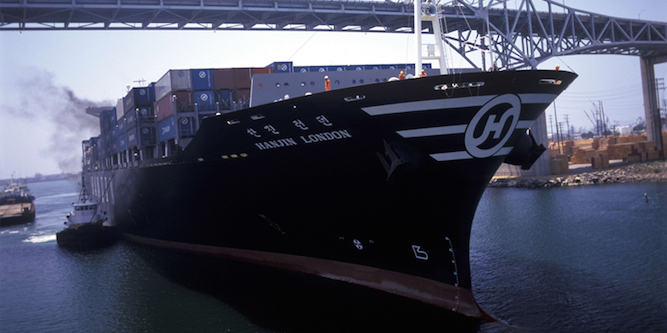
Hanjin Shipping is separate of the larger Hanjin Group, a Seoul-based chaebol that besides operates Korean Air, Korea Aerospace University, and Czech Airlines. Hanjin has the capability to carry 630,000 TEUs, which gives it a 3.2 % market share .
A few concluding observations : All carriers are suffering from low ocean rates due to a decline in ball-shaped deal, and more importantly, to over-investment in capacity. ball-shaped demand is not expected to pick back up soon, and the carriers have not cut back on ordering new and larger ships. Therefore we can expect ocean rates to stay low for the next several years. Notice that few companies were established after the container revolution of the 1960s. about every aircraft carrier except the european ones were founded after the second coming of containerization. All of these are firms that adapted to the future or outcompeted the bequest businesses Consider that Maersk bought its first container ship merely in 1973. The stream top five ocean carriers are all either private- or family-owned. Maersk may be a public ship’s company, but the majority of its shares are in class hands. In addition, for roughly 100 years Maersk was run by two men : Møller père and Møller fils.
Read more: Australia Maritime Strategy
China Shipping and COSCO will soon merge, and CMA CGM has recently acquired NOL. This is an diligence that rewards scale, and we should expect more consolidations in the future. Unless specified otherwise, photos in this assemble were taken from the effigy galleries of have ocean carriers. Read this future > > A Guide to Ocean Alliances
